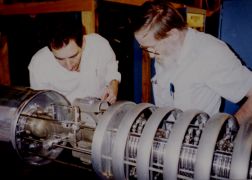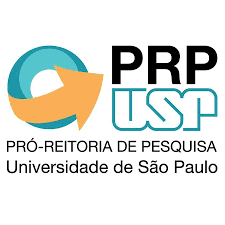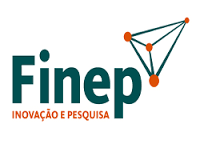Introduction
LAMFI-USP was created on 06/01/89, during the 228th session of the Assembly of the IFUSP which defined its rules of use, the composition of its management committee and the attributions of its coordinator. Installed in 1992 with support of the Inter-American Development Bank (IDB), LAMFI-USP represents an initial investment, distributed between equipment and building facilities, of approximately US$ 790,000.00 (1990). Occupying a total area of 230 m2 in the IFUSP Van de Graaff building, its main resources are an 1.7MV Pelletron-tandem electrostatic accelerator (National Electrostatic Co.) with two ion sources and three dedicated analytical setups: an external beam setup with a large-area 3D robotic stage, a general in vacuum Ion Beam Analysis setup and a dedicated in vacuum PIXE analysis setup. Combined, these analytical techniques allow the measurement of all elements of the periodic table, from Hidrogen to Uranium, with detection limits around μg / g (ppm).
LAMFI-USP stands out as the first laboratory of its kind in the country mainly dedicated to Ion Beam Analysis of any kind of material in a multiuser regime. LAMFI-USP is operated and mantained by a local technical staff and is managed by a scientific committee with members of the Institute of Physics and of the Polytechnic School. Analysis at LAMFI can be requested by any interested user through an Analysis Request Form available in this site. Since its begining, LAMFI is operating uninterruptedly, analyzing an average of 3,500 samples per year and servicing more than 50 projects every year, including theses, dissertations, undergraduate or postgraduate courses and research projects.
In the year of 2015, LAMFI developed and started to distribute worldwide the open source MultiSIMNRA software, for self-consistent Ion Beam Analysis of IBA spectra, and especially suited for accurate determination of elemental depth profiles in thin films.
The main users of LAMFI and their respective allocated analysis time are: Applied Physics Group with Accelerators, IFUSP (38%), Research Nucleus of Applied Physics to the Study of Artistic and Historical Heritage (FAEPAH- USP) (13%), POLI-USP (8.5%), Laboratory of Magnetic Materials, IFUSP (8%), ITA (5.4%). The remaining time is used by other laboratories of IFUSP, UNICAMP, UFSCAR, FEI, UFF, PUC-RJ, UEL, UNIVAP and IPEN.

Prof. Juan Carlos Acquadro (right) and Prof. Manfredo Tabacniks (left)
inspecting the accelerator tube in the year 1993.








